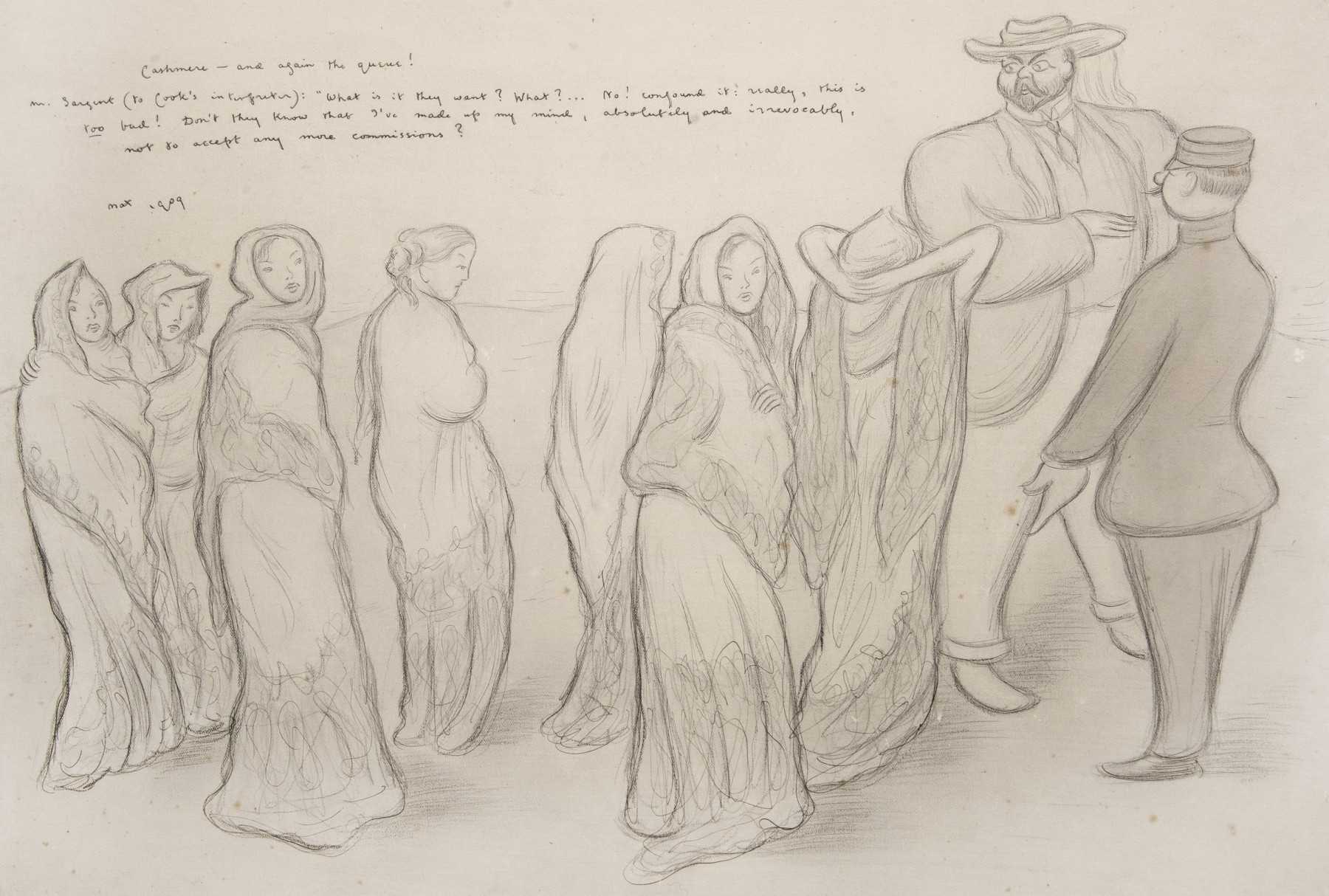
(click image to enlarge)
In the summer of 1908, the American artist, John Singer Sargent (1856-1925), exhibited his oil painting, Cashmere, at the Royal Academy (as No 496). It depicted his niece, Reine Ormond, wearing a large exotic patterned shawl and standing in seven different positions against a verdant background. The effect is of seven similar women walking together, and is perhaps suggestive of both the Aesthetic paintings of Albert Moore and the Classical friezes that inspired them, though with an Orientalist twist. It also relates to a number of other works that Sargent produced of women in shawls (as Leigh Culver has explored in the fascinating dissertation, ‘Performing Identities in the Art of John Singer Sargent’, University of Pennsylvania, 1999).
At the time of its exhibition, Sargent’s Cashmere was the subject of much comment, which attempted both to define and deny a possible meaning. Contributions to this comment were not only written but also drawn, as is epitomised by the present work by Max Beerbohm, who caricatured Sargent some 22 times. Exhibited at the New English Art Club in 1909, a year after Cashmere appeared at the RA, it replicates the composition of the painting and adds the figures of Sargent and an interpreter employed by the travel agent, Thomas Cook. In so doing, it locates the setting to the English protectorate of Kashmir, the northernmost region of the Indian subcontinent, a place that Sargent never actually visited. The young women comprise a queue of natives keen that Sargent paint their portraits. They may not be aware that Sargent had tired of accepting portrait commissions and, in 1907, had officially closed his studio. From that time, he focussed increasingly on landscapes and architectural subjects, including many in watercolour, and also completed the series of murals for public buildings in Massachusetts.